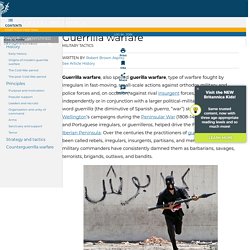

eRiding - The World in Conflict - Homepage. Epic Databases. Site Map of the New Zealand Mounted Rifles webpages. A History of the First World War in 100 Moments: Guerrilla in the mist - a great German military maverick outwits the British again. A Multimedia History of World War One. Europeana Collections. BBC Schools - World War One. WW100 New Zealand. DigitalNZ - Search results for world war one. World War I History - World War I. Tensions had been brewing throughout Europe–especially in the troubled Balkan region of southeast Europe–for years before World War I actually broke out.

A number of alliances involving European powers, the Ottoman Empire, Russia and other parties had existed for years, but political instability in the Balkans (particularly Bosnia, Serbia and Herzegovina) threatened to destroy these agreements. The spark that ignited World War I was struck in Sarajevo, Bosnia, where Archduke Franz Ferdinand—heir to the Austro-Hungarian Empire—was shot to death along with his wife Sophie by the Serbian nationalist Gavrilo Princip on June 28, 1914. Princip and other nationalists were struggling to end Austro-Hungarian rule over Bosnia and Herzegovina. But because Russia supported Serbia, Austria-Hungary waited to declare war until its leaders received assurance from German leader Kaiser Wilhelm II that Germany would support their cause.
Facts & History. With Serbia already much aggrandized by the two Balkan Wars (1912–13, 1913), Serbian nationalists turned their attention back to the idea of “liberating” the South Slavs of Austria-Hungary. Colonel Dragutin Dimitrijević, head of Serbia’s military intelligence, was also, under the alias “Apis,” head of the secret society Union or Death, pledged to the pursuit of this pan-Serbian ambition. Believing that the Serbs’ cause would be served by the death of the Austrian archduke Franz Ferdinand, heir presumptive to the Austrian emperor Franz Joseph, and learning that the Archduke was about to visit Bosnia on a tour of military inspection, Apis plotted his assassination.
Nikola Pašić, the Serbian prime minister and an enemy of Apis, heard of the plot and warned the Austrian government of it, but his message was too cautiously worded to be understood. Get a Britannica Premium subscription and gain access to exclusive content. Subscribe Now. First World War. Origins The First World War was caused by the destabilisation of the balance of power in Europe due to the rise of Germany.

The war began in 1914 when Austria-Hungary invaded Serbia because of the assassination of an archduke. Countries had made alliances with each other, and soon most of Europe was at war. New Zealand was part of the British Empire, and when Britain declared war on Germany, in August 1914, that meant New Zealand was at war too. The two sides were called the Central Powers (Germany, Austria-Hungary) and the Allies, which included the British Empire, Russia and France. New Zealand enters the war New Zealand decided to send soldiers to fight in the war for a number of reasons, including New Zealand’s strong ties to Britain and its concern with keeping trade routes open so it could continue to export to Britain.
Within a month New Zealand troops had occupied Western Samoa, which was a German territory. Gallipoli. Guerrilla Warfare NZ. New Zealand Mounted Rifles. Guerrilla warfare. Guerrilla warfare, also spelled guerilla warfare, type of warfare fought by irregulars in fast-moving, small-scale actions against orthodox military and police forces and, on occasion, against rival insurgent forces, either independently or in conjunction with a larger political-military strategy.

The word guerrilla (the diminutive of Spanish guerra, “war”) stems from the duke of Wellington’s campaigns during the Peninsular War (1808–14), in which Spanish and Portuguese irregulars, or guerrilleros, helped drive the French from the Iberian Peninsula. Over the centuries the practitioners of guerrilla warfare have been called rebels, irregulars, insurgents, partisans, and mercenaries. Frustrated military commanders have consistently damned them as barbarians, savages, terrorists, brigands, outlaws, and bandits. The French military writer Henri, baron de Jomini (1779–1869), classified the operations of guerrilla fighters as “national war.” History Early history. World War I in Photos: Animals at War. When the war began, Europe's armies had an understanding of warfare that put the use of cavalry in high regard.

Soon, however, the deadly terrain that evolved around trench warfare rendered cavalry attacks nearly useless on the Western Front. But the need for constant resupply, movement of new heavy weaponry, and the transport of troops demanded horse power on a massive scale -- automobiles, tractors, and trucks were relatively new inventions and somewhat rare. British and French forces imported horses from colonies and allies around the world, a near-constant flow of hundreds of thousands of animals across the oceans, headed for war. One estimate places the number of horses killed during the four years of warfare at nearly 8 million.
Other animals proved their usefulness as well: Dogs became messengers, sentries, rescuers, and small beasts of burden.